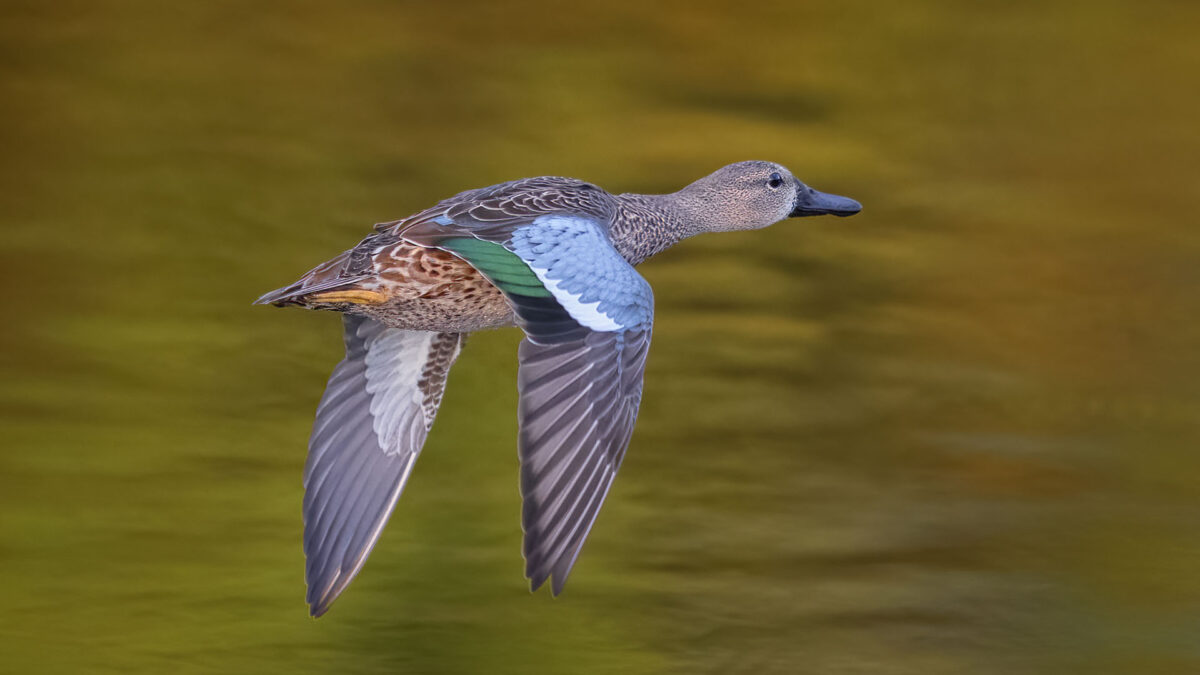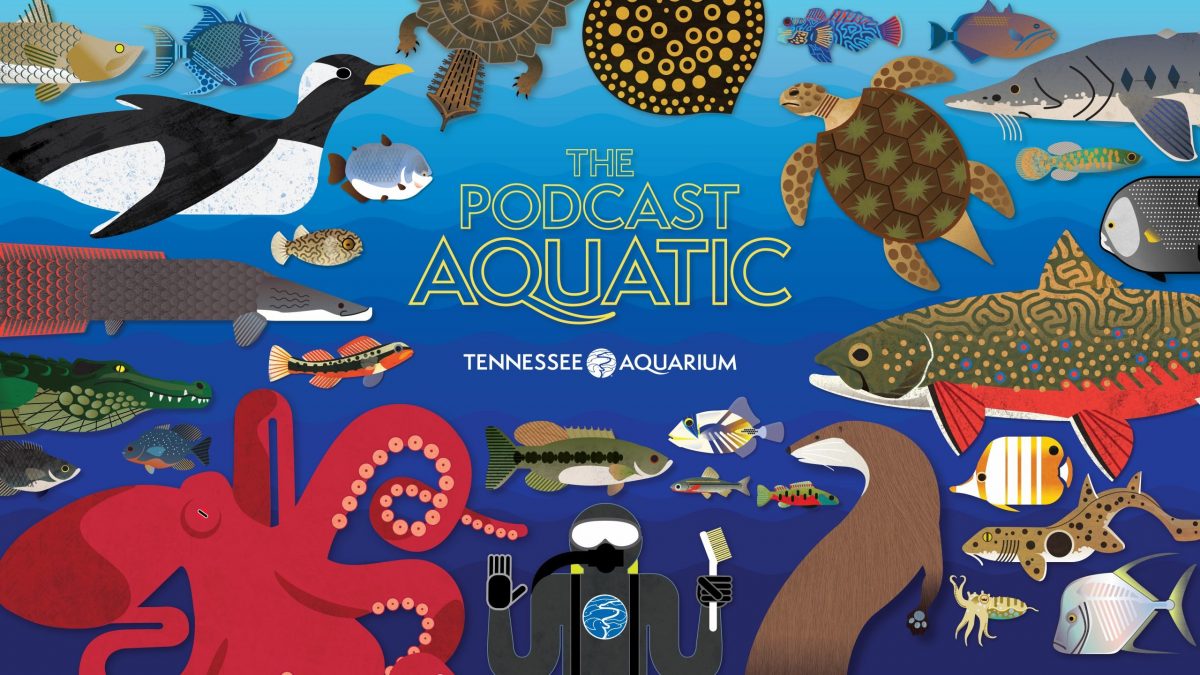As they explore beneath the moss-draped overhanging limbs of the Delta Country gallery, many guests probably assume the congregation of American Alligators are the gallery’s undisputed rulers.
In reality, the King of the Aquarium’s living forest gallery is its massive, heavily armored male Alligator Snapping Turtle. This case of mistaken identity is easily forgiven, however, since these dinosaur-like reptiles aren’t much for making royal appearances.
“They’re ambush hunters. They can spend long periods of time not moving at all, jammed up under a log waiting for a fish to come by,” says Curator of Forests Kevin Calhoon. Despite concerted effort to spot them while in the field, Calhoon has yet to see a wild Alligator Snapping Turtle thanks to this hard-wired reclusiveness.
The Aquarium’s enormous male Alligator Snapping Turtle was collected from the Arkansas River. He came to the Aquarium in December 1991, months before the official opening of the River Journey building, and has lived in Delta Country ever since.
Based on his size at the time of his arrival — 120 pounds — experts estimate him to be about 85 years old, but as a wild-born individual, no official records exist to home in his exact birthdate, so he may be much older.
“We’ve had him here for so long, and with his age possibly being over 100, you tell that to guests, and they go, ‘Wait. What?’” recalls Senior Animal Care Specialist Jennifer McPheeters, who has cared for the male snapper and the other animals in Delta Country since 2012.
“His size is one thing, but how old he is always blew people’s minds.”
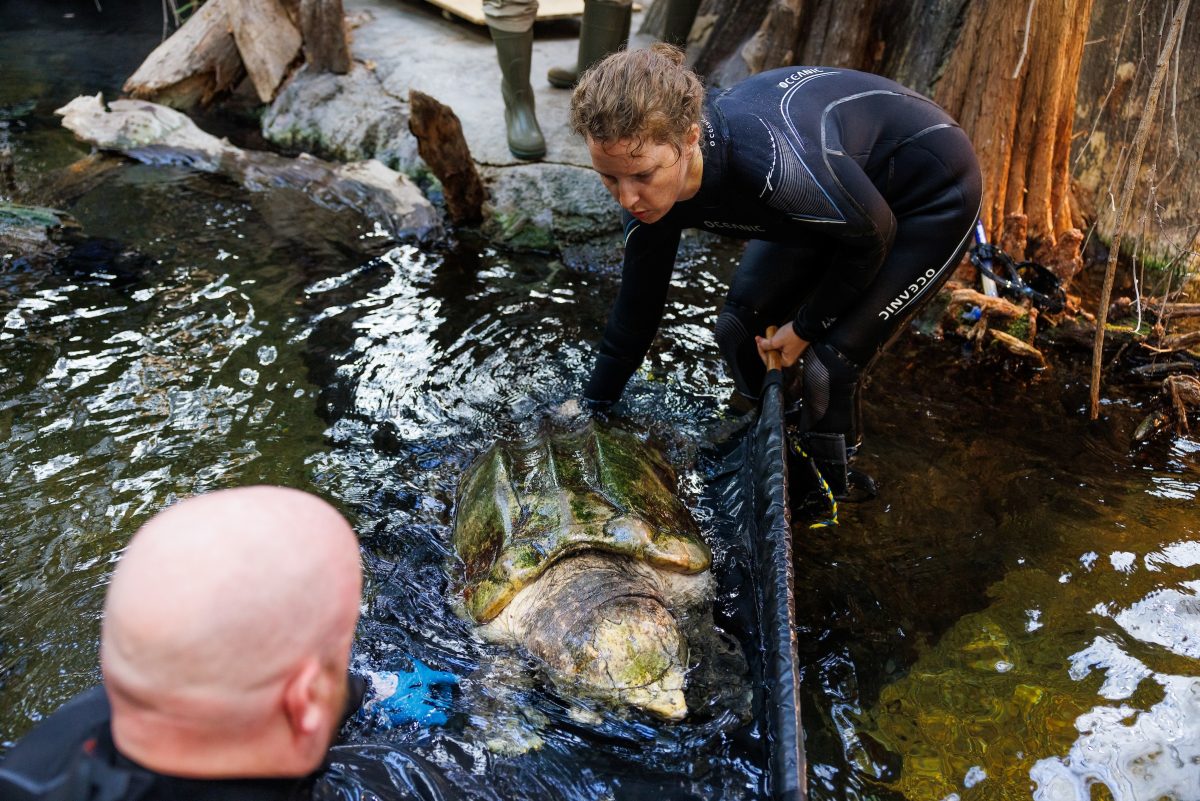
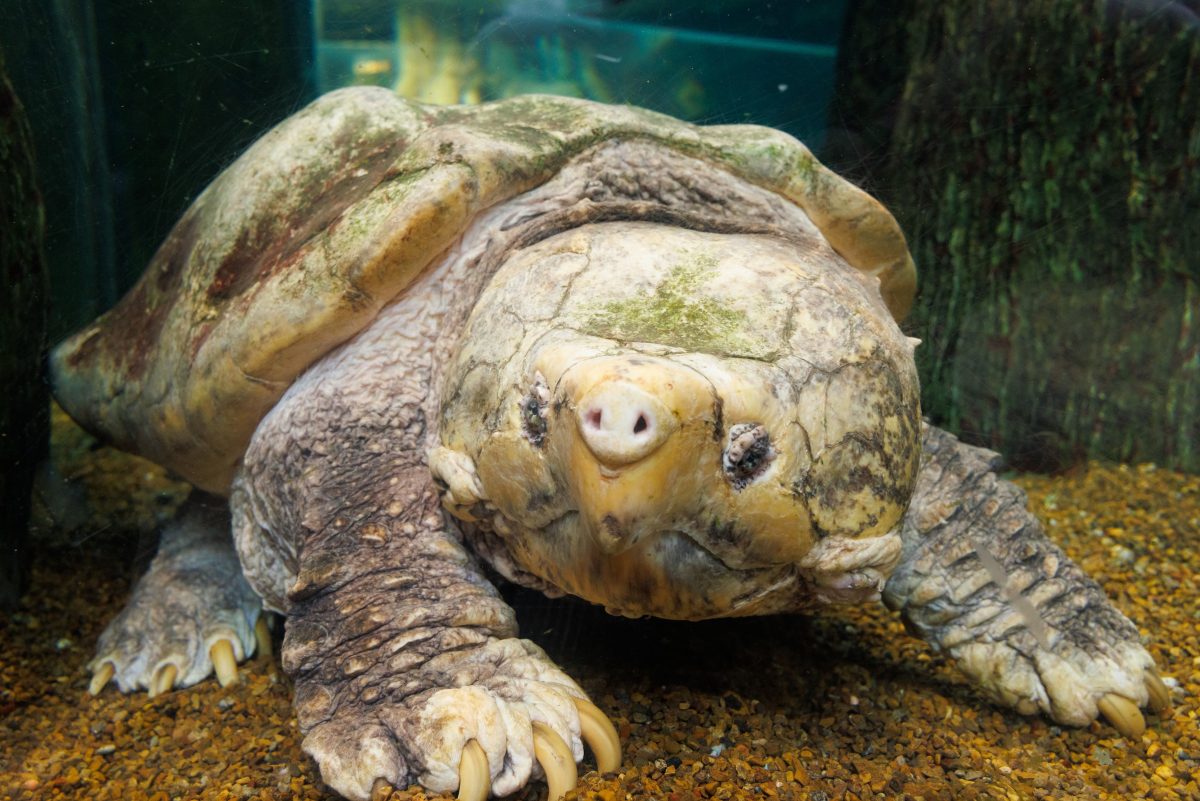
Fig. 1 (Left) Senior Animal Care Specialist Jennifer McPheeters helps to corral the Aquarium's male Alligator Snapping Turtle during a routine annual physical. (Right) When he was collected from the Arkansas River in 1991, the male Alligator Snapping Turtle was 120 pounds. During his most recent physical, he was found to weigh about 160 pounds.
Today, the King of the Swamp’s reign has come to a close, signaling the end of life for one of the Aquarium’s oldest and most iconic animals.
Yesterday, the massive male was found lying almost entirely unresponsive just above the exhibit’s waterline. With their heavy bodies and lack of a diaphragm, Alligator Snapping Turtles naturally spend most of their lives in the comforting buoyancy of water, so finding the male on land was an immediate cause for concern.
Upon receiving reports of this unusual position and behavior, Aquarium staff leapt into action, initiating an hours-long, all-hands effort to safely relocate him to an off-exhibit care facility, evaluate his condition and attempt treatment.
As of his most recent physical, this behemoth reptile weighed about 160 pounds. Moving such a large animal was a hugely complicated undertaking that ultimately involved a vast Aquarium team including veterinarians and husbandry experts as well as life support system operators, security personnel and maintenance specialists.
After analyzing fluid discharges and conducting on-site radiographs (x-rays) of his top and side, the turtle was found to be experiencing a fungal and bacterial infection in his lungs. Despite hours of observation and attempts at treatment, the turtle is believed to have succumbed to complications resulting from severe pneumonia.
A necropsy will be performed and should offer confirmation of the cause of death as well as rule out conditions that could affect other animals in Delta Country. Tissue samples were sent to a veterinary laboratory for additional analysis.
Despite his age, the massive turtle’s passing was unexpected. He had been behaving normally, exhibiting only the usual changes in activity level that come with intentional reductions to Delta Country’s ambient light and water temperature that replicate a seasonal transition to autumn.
“I’m really surprised and very sad,” McPheeters says. “He was actively breeding and moving around. He was engaged in training and eating all kinds of foods.
“When we found him like that, it was like, ‘OK, not only are we suddenly sick. We’re suddenly very, very sick.’ The shock of having no warning, not being able to know it was going on, hurts.”
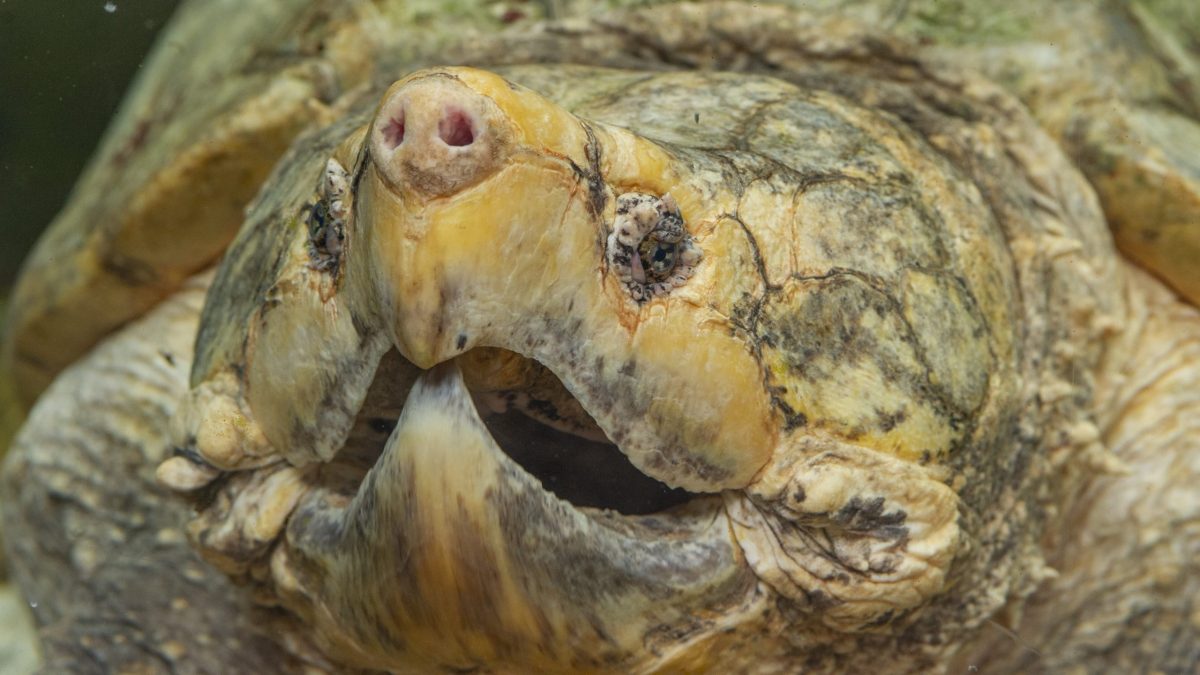
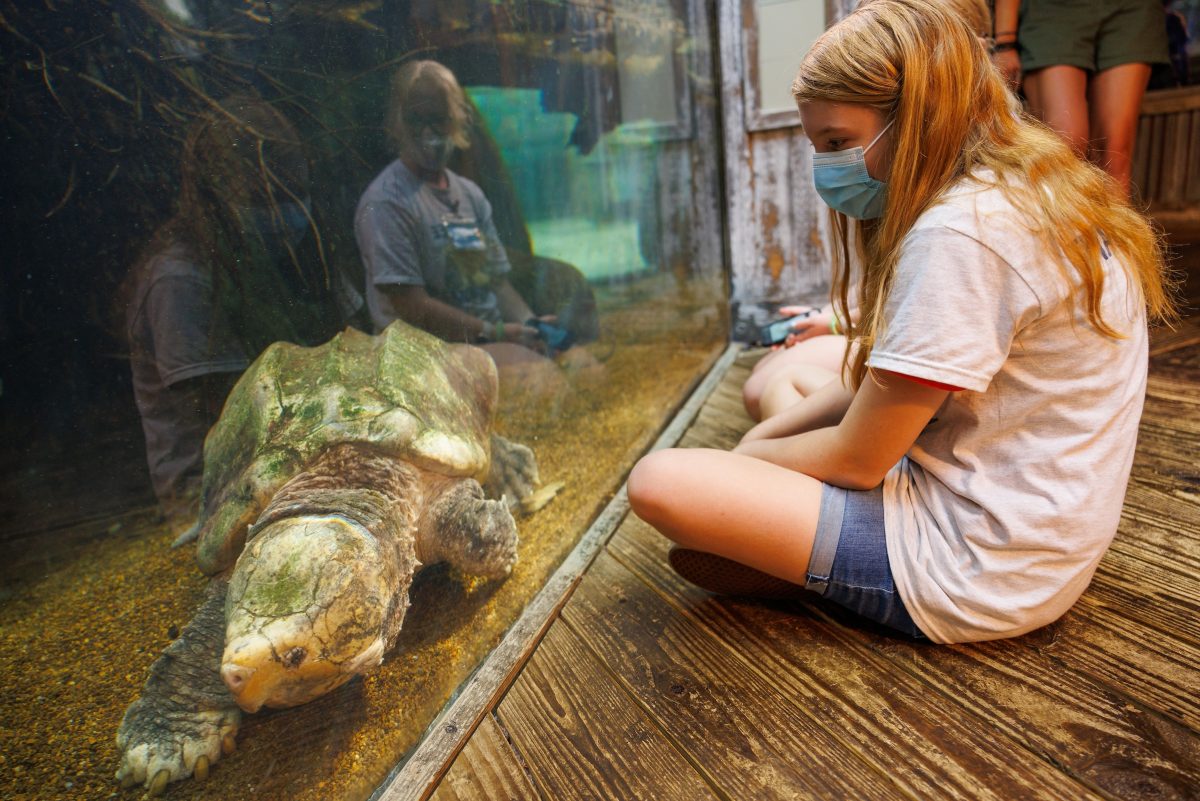
Fig. 3 Naturally reclusive ambush predators, Alligator Snapping Turtle spend much of their lives immobile, hiding in wait for potential prey to approach. (Right) Guests at the Aquarium, including participants in the Aquarium's Summer Camps, would occasionally be lucky enough to spot the Aquarium's enormous male as he made his way past along the acrylic panels of the Delta Country gallery.
As home to the largest collection of freshwater turtles in a public institution, these shelled reptiles are a common sight in Aquarium exhibits, but few could claim the kind of notoriety enjoyed by the Delta’s mega-sized monarch.
“He was super-iconic,” McPheeters says. “People have been looking at him for 30 years. He’s an animal that guests, especially members and those who come back more than once, remember and want to catch up on. Everyone knows this turtle.”
For days on end, the King of the Swamp would follow his natural inclination to hide and remain largely immobile. On occasion, however, he seemed to enjoy lumbering by the acrylic along the bottom of the exhibit, each step of his enormous limbs appearing to land with thunderously heavy weight.
From such a close perspective, lucky guests could take in minute details of his appearance, such as the trio of spiked ridges marching down his colossal shell, his hooked bill or — on even rarer occasions — the wriggling, worm-like oral lure with which Alligator Snapping Turtles coax their prey within striking distance.
“It was special when he came out and moved around in the front,” Calhoon says. “That didn’t happen every day.”
For many of the more than 26 million guests to visit the Aquarium in the last 31 years, these royal promenades were a rare opportunity to be within inches of an animal they otherwise would never encounter. Those kinds of moments helped the Alligator Snapping Turtle to contribute to awareness of its wild cousins, whose populations were jeopardized in the early 20th century by being over hunted as a food source.
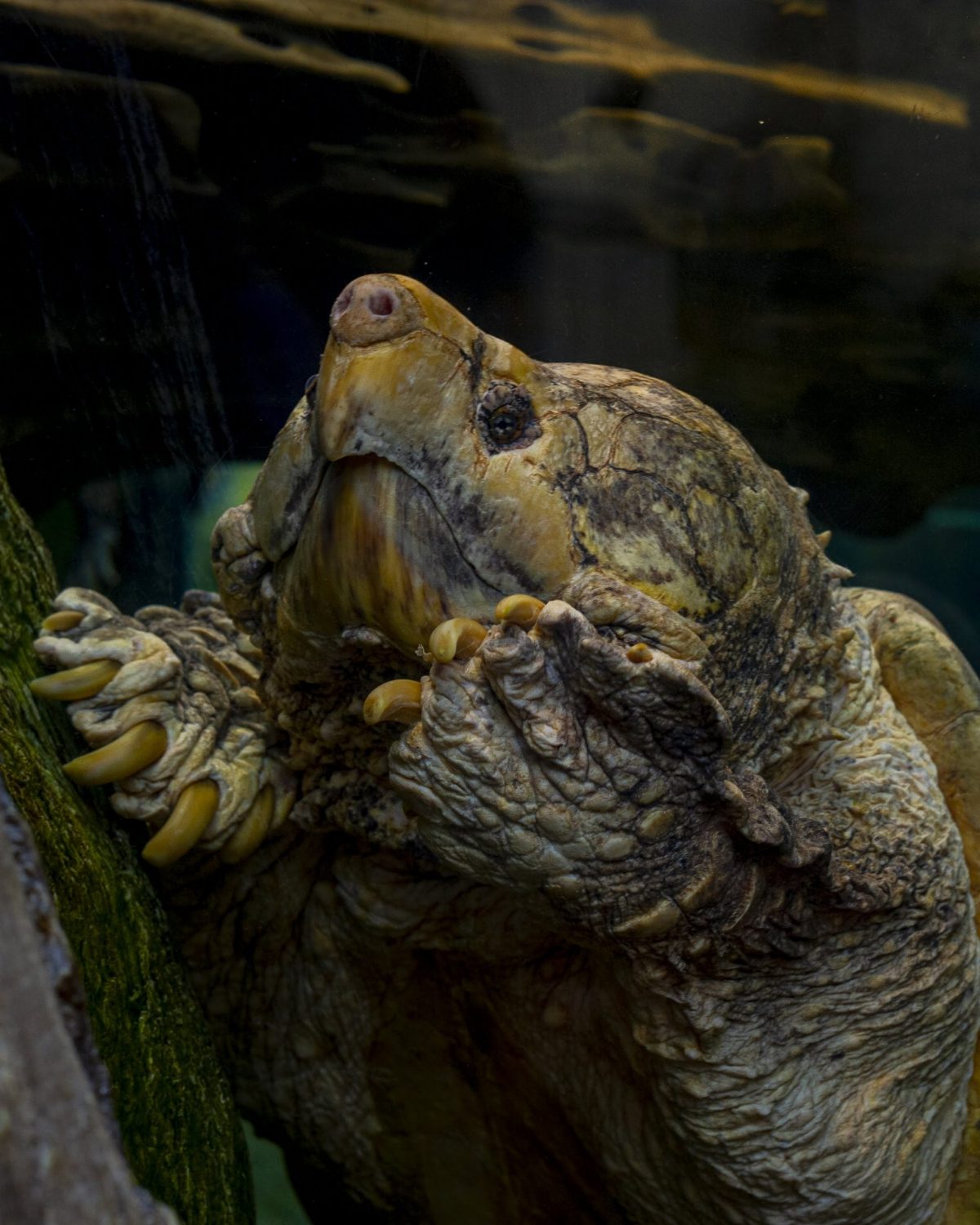
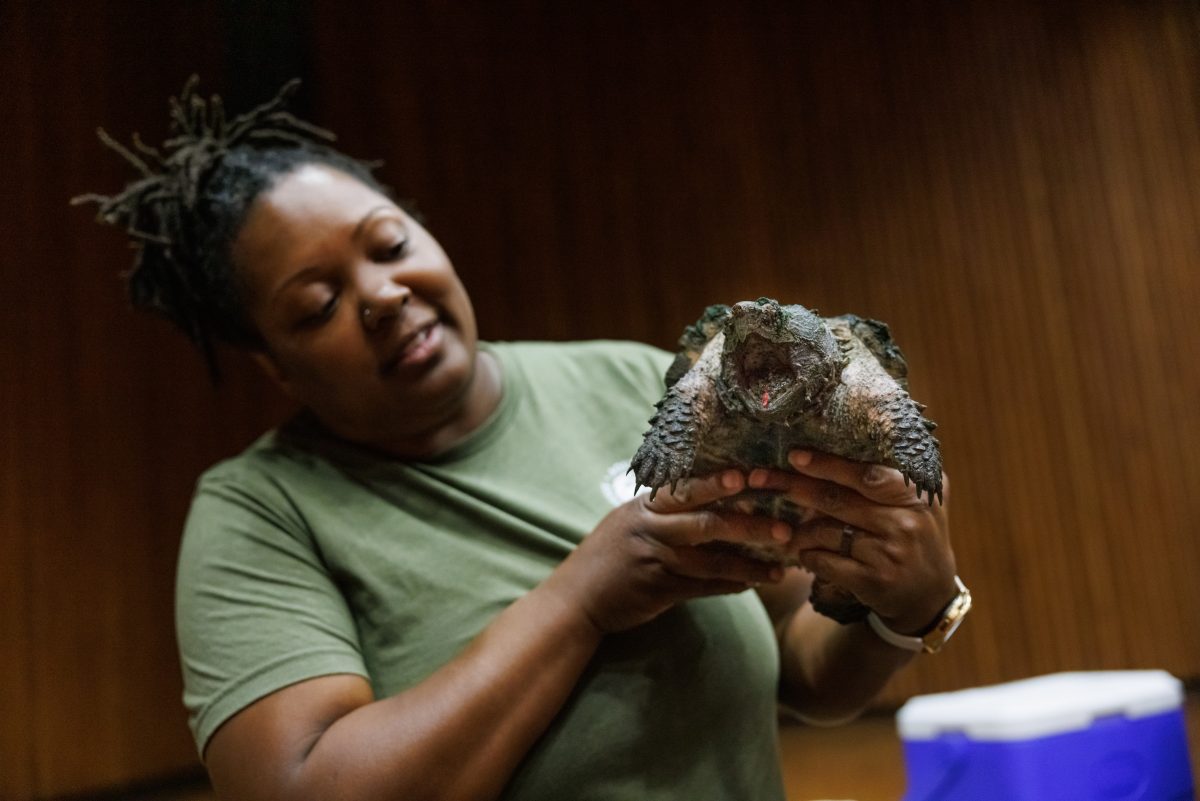
Fig. 4 (Left) The Aquarium's male Alligator Snapping Turtle is gone, but he's not forgotten. (Right) Lead Animal Ambassador Coordinator Tanisha La Guardia presents a juvenile Alligator Snapping Turtle during an animal encounter program during one of the Aquarium's Summer Camps. During his time at the Aquarium, the male Alligator Snapping Turtle produced more than 50 offspring, three of which continue to live at the Aquarium and two of which are participants in ongoing education efforts as Ambassador Animals.
The King leaves behind another legacy in the form of more than 50 offspring that were hatched at the Aquarium. Many of those have been donated or loaned to other facilities, including the Louisville Zoo, Tampa Aquarium, Mystic Aquarium in Mystic, Connecticut, and the Dauphin Island Sea Lab in Mobile, Alabama.
Three of the King’s royal progeny remain at the Aquarium, two of them serving as members of the Ambassador Animal program. As Ambassador Animals, these 10-year-olds regularly interact with guests during in-person programming that offers an even closer look at these reclusive reptiles.
In years to come, this new generation of Alligator Snapping Turtles hatched and raised in human care will help experts to better understand a species whose natural history is still largely a mystery, McPheeters says.
“We’re going to see how big they are at different times in their life,” she says. “By watching these juveniles grow, maybe in 100 years people will be able to answer these questions we have about their longevity.”
